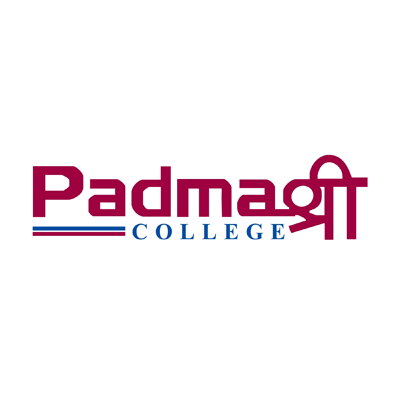Overview
National Academy of Medical Sciences (NAMS) was established in 2060 BS (2002 AD) and started a course for MD and MS. Bir Hospital is an embodied hospital of NAMS. NAMS has taken Maternity Hospital Thapathali, Kanti Children Hospital Maharajgunj, Nepal Army Hospital, Patan Hospital, and Nepal Eye Hospital as affiliated hospitals for the program. NAMS Starts MBBS programs from 2024 AD.
Under the memorandum of understanding with these hospitals, programs are running. Currently, this institute is enrolling around 100 MD, MS, and MDS residents each year. Similarly, a super specialty fellowship course on neurosurgery, a Fellow of the National Academy of Medical Sciences (FNAMS), was started in 2061 BS (2004 AD). In addition, the Doctorate of Medicine and Master of Chirurgery (DM, M.Ch) started in 2067 BS (2010 AD).

Historically, the nursing program started in 2013 BS in the name of Mahabaudha Nursing College. With the advent of the new education system in Nepal Mahabaudh Nursing College was put under the Tribhuwan University in 2028 BS. Then this program was shifted to the Institute of Medicine Maharajgunj in 2044 BS. In 2046 BS nursing program was restarted in Bir Hospital with the affiliation to Tribhuwan University. With the establishment of NAMS in 2060, the nursing program came under the NAMS. In 2062 BS Post Basic Bachelor course in Nursing was started and now we are on the verge of starting the Master of Nursing program.
Objectives of NAMS:
As mentioned in the preamble (2063) of the NAMS, there are three major objectives
- To provide higher education in the field of Medicine.
- To produce skilled and knowledgeable human resources for the treatment of general people.
- Source of Research in the field of health sciences in the country.
Vision
To be a leader in the field of quality medical education and to produce a highly-skilled human resource for the nation this Academy will play a pivotal role. To upgrade different strata of health institutes of Nepal and to provide quality health services to everyone.
Mission
Develop the institution into a center of excellence for higher education and medical services by enhancing teaching, learning, and research activities. To fulfill the growing demand for human resources for the country and contribute to the national health policy Expansion of teaching, learning, and research activities to Regional, sub-regional, and Zonal levels.
Long-term goal
Bir Hospital will be a center for academic excellence and remain a central referral hospital of the government of Nepal. This hospital will be upgraded to a 2000-bed hospital with VVIP and VIP suite and will be a world-class hospital. A master plan has already been finalized.
NAMS will be APEX University and academic epicenter under the Ministry of Health and Population. Academic activities will be expanded up to the Zonal and certain district-level hospitals of the country. Conceptual NAMS has been published, which is mentioned below:
Central, Regional, Sub-regional, and Zonal hospitals will be the academic centers under the affiliation of NAMS. These hospitals will have the right to take residents and request faculty accreditation. NAMS as an Apex university will do the following:
- Common intake and exit examination.
- Accreditation of faculty positions and hospital facilities for academia.
- Evaluation and monitoring of academic activities and grading of the Institute.
- Monitoring and evaluation of the medical research activities of faculties and residents.
- Certification of the residents.
- Formulation of health policy with the cooperation of the government.
- For the standardization of academics as well as quality medical service NAMS will act as a pivotal body.
Short-term goal
- Our short-term goal is to boost academic activities and improve service quality in order to reach the level of excellence.
- The VVIP and VIP treatment suites are under construction. Hospital modernization with the latest medical equipment is of utmost importance.
- Upgrading Laboratory, Radiodiagnosis services, Emergency services, ICU, and CCU are the top priority. Operating theatres are to be renovated.
- Resident rooms will be well maintained. For the close monitoring and evaluation of academic activities and teachers, special provision is going to be made soon.
- To facilitate the academia better internet facilities along with a number of journals, periodicals and textbooks will be increased. Classrooms will be better equipped.
Finance:
This Institute is financially fragile and unable to self-sustain due to various constraints. Financial support is mainly from the ministry of Health and the Population. Other sources of income are income generated from hospital services and student’ fees.
As this is mostly a free hospital and the charges, when applied, are also nominal internal income generation is limited. As far as the students’ fee is concerned all the candidates from the Ministry of health do not have to pay fees and for others the fee is nominal. In order to make up for the deficit increment in government grants, service extension and extended health services are urgently required.
NAMS Courses:
DM/MCh, MD/MS/MDS, MS, BNS, BMS, B.Sc. MIT, MSc. MIT, PCL Nursing, BOVS, Hand & Micro Surgery Fellowship, Trainings / Short Courses, Medical Electives
NAMS Short-Term Courses / Training:
ACLS, Medical Education, Research Methodology, Trauma Life Support, Basic Surgical Skill, Palliative Course, and Anesthetic Assistant Courses
Outcome of NAMS
Since the establishment, eight hundred and eighty-six students have enrolled and five hundred and twenty students have already passed the final exams to date. Out of them more than 50 are from SAARC countries mainly the Maldives, India, Srilanka, and Bhutan. Similarly thirteen DM, M.Ch students have completed the final exams and currently, twenty-four are enrolled in the course. Around 200 post-basic nurses have completed final exams. Besides the thesis, more than three dozen of original research papers have been published in indexed journals of Nepal.
Bir Hospital:
Bir Hospital is the oldest hospital in Nepal. This hospital was established in 1947 BS, under the name of contemporary Prime Minister Bir Shamsher Jung Bahadur Rana. Initially, it was a seven-bed hospital with 5 staff. Today it has a proud history of 125 years and is the first hospital in Nepal where the practice of modern medicine commenced. Till the eighties services including gynecology, pediatrics and psychiatry were available in this very hospital. With the evolvement of super specialty and increasing workload in the limited premises, these services were shifted to Indra Rajya Laxmi Devi Shah Maternity hospital Thapathali, Kanti Bal hospital Maharajgunja and Patan mental hospital Lalitpur respectively.
This is a historical hospital as every modern medical service in the country has roots in this hospital. This is the first hospital where neurosurgery was started in the times when CTscan was not around. In the field of modern cardiology, Nepal’s first case of angiography, cath lab, and valve replacement were all done at Bir Hospital. Every senior doctor who was a pioneer in the field of modern medicine in Nepal like Dr. Mrigendra Raj Pandey, Dr. Anjani Kumar Sharma, Dr. Dinesh Nath Gongal, Dr. Shabitri Gurung, Dr. Dibyashree Malla, Dr. Sudip Kumar Bhattacharya, Dr. Mohin Shah, Dr. Puskar Satyal, Dr. Ishor Lal Acharya, Dr. Dhrub Lal Singh, Dr. Dambar Bahadur Karki, Dr. Sachche Kumar Pahadi, Dr. Dharma Sharan Manadhar, Dr. Ram Prasad Pokharel, Dr. Yanta Mani Pradhan, Dr. Ram Bhadra Adiga, Dr. LN Prasad, Dr. JP Rijal, Dr. Jwala Raj Pandey, Dr. Basant Lal Shrestha, Dr. Gopal Achary, Dr. Hemanga Dixit, Dr. Shankar Bahadur Shrestha, Dr. NB Amatya, Dr. Laxman Paudel had started their careers in this hospital. These pioneers are the heroes and the legends of modern medicine in Nepal. Bir hospital is the central hospital where services were provided to the royal family members in past.
Similarly, Bir hospital provided medical education to different levels of health personnel as per the needs of the country. Starting with simple wound dressing and compounder training middle level health personnel training for health assistants was started in 2014 BS, in the name of Civil Medical School. This training was continued till 2018 BS. Similarly, nursing education started in 2013 BS and Mrs. Rup Kumari Gurung was the chief of the nursing school. This hospital was used for the clinical practice by the Institute of Medicine, Tribhuwan University, for their courses of Auxiliary Health Worker, Health Assistant, and graduate medical education. In 2035/36 BS this institute was accredited by the Royal college of Edinburgh as a center for training for fellowship in surgery and membership in Medicine.
This was an era of commencement of postgraduate education in Nepal. From 2035 BS to 2050 BS no government scholarship was provided for postgraduate education in Nepal. There was a big gap between undergraduate and postgraduate doctors. It was realized that post-graduate medical education should exist in Nepal only. This led to the formation of the postgraduate medical education coordination committee (PGMECC) in 2051/52BS by the valley group of hospitals. In 2059/60 BS concept of the National Academy of Medical Sciences (NAMS) was born.
Contact National Academy of Medical Sciences (NAMS)'s administrative office for detailed information on the course, admissions, location, fees, scholarships, facilities, counseling, or eligibility.
Contact Details:
National Academy of Medical Sciences (NAMS), Bir Hospital
Mahaboudha, Kathmandu, Nepal
Phone: NAMS +977-1-5970750
Phone: Bir Hospital +977-1-5970750, +977-1-4221119, +977-1-4221988, +977-1-4222865
Email: [email protected]
Website: www.nams.org.np


















